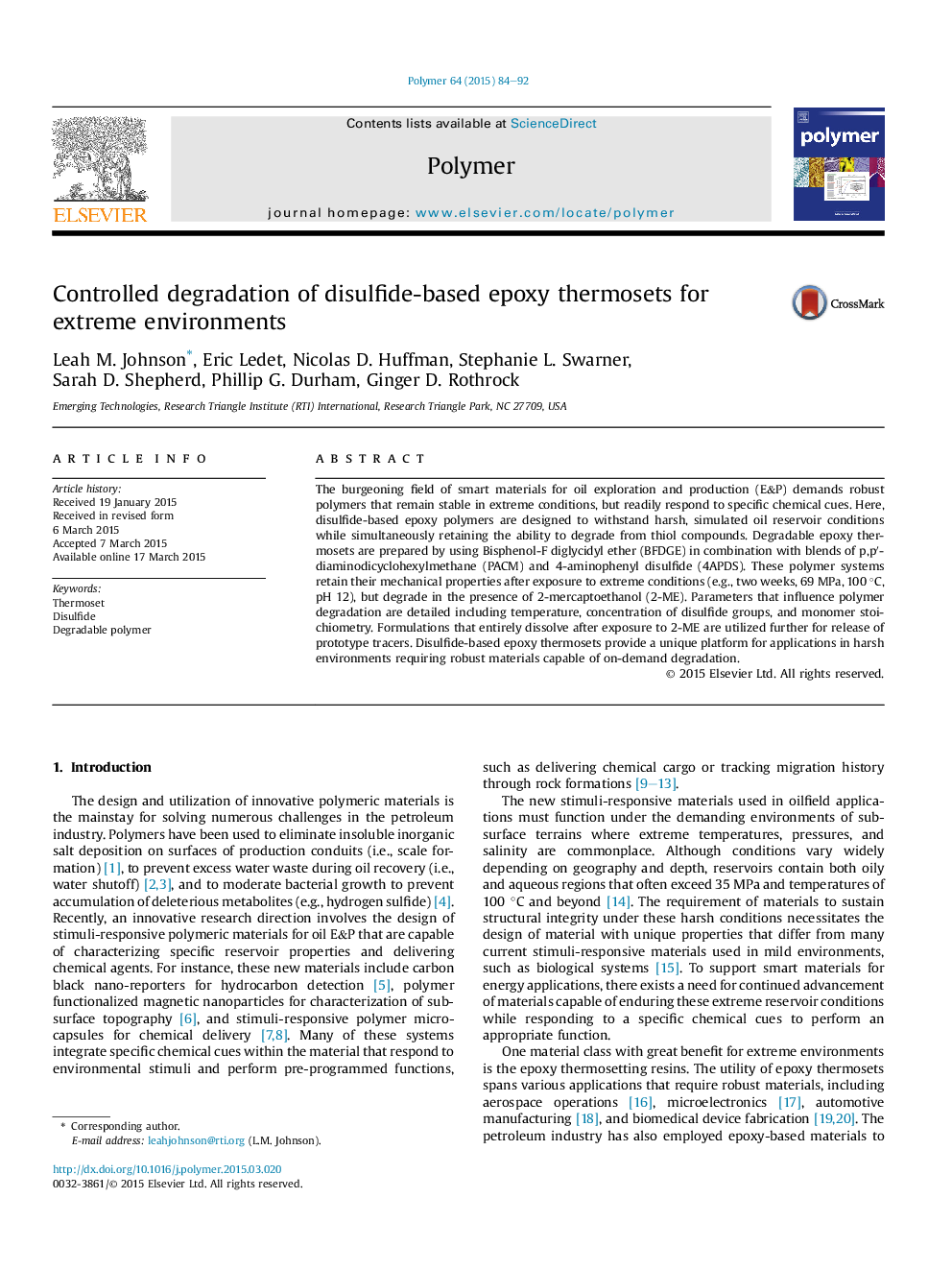| کد مقاله | کد نشریه | سال انتشار | مقاله انگلیسی | نسخه تمام متن |
|---|---|---|---|---|
| 5180433 | 1502542 | 2015 | 9 صفحه PDF | دانلود رایگان |
- Epoxy thermosets are prepared that contain different amounts of disulfide groups.
- Degradation is controlled by temperature, disulfide content, and stoichiometry.
- Disulfide epoxy polymers withstand conditions of two weeks, 69MPa, 100 °C, pH 12.
- Formulations that completely dissolve in 2-mercaptoethanol are described.
- Macro-particles comprising disulfide epoxy are used to release prototype tracers.
The burgeoning field of smart materials for oil exploration and production (E&P) demands robust polymers that remain stable in extreme conditions, but readily respond to specific chemical cues. Here, disulfide-based epoxy polymers are designed to withstand harsh, simulated oil reservoir conditions while simultaneously retaining the ability to degrade from thiol compounds. Degradable epoxy thermosets are prepared by using Bisphenol-F diglycidyl ether (BFDGE) in combination with blends of p,pâ²-diaminodicyclohexylmethane (PACM) and 4-aminophenyl disulfide (4APDS). These polymer systems retain their mechanical properties after exposure to extreme conditions (e.g., two weeks, 69 MPa, 100 °C, pH 12), but degrade in the presence of 2-mercaptoethanol (2-ME). Parameters that influence polymer degradation are detailed including temperature, concentration of disulfide groups, and monomer stoichiometry. Formulations that entirely dissolve after exposure to 2-ME are utilized further for release of prototype tracers. Disulfide-based epoxy thermosets provide a unique platform for applications in harsh environments requiring robust materials capable of on-demand degradation.
Journal: Polymer - Volume 64, 1 May 2015, Pages 84-92
